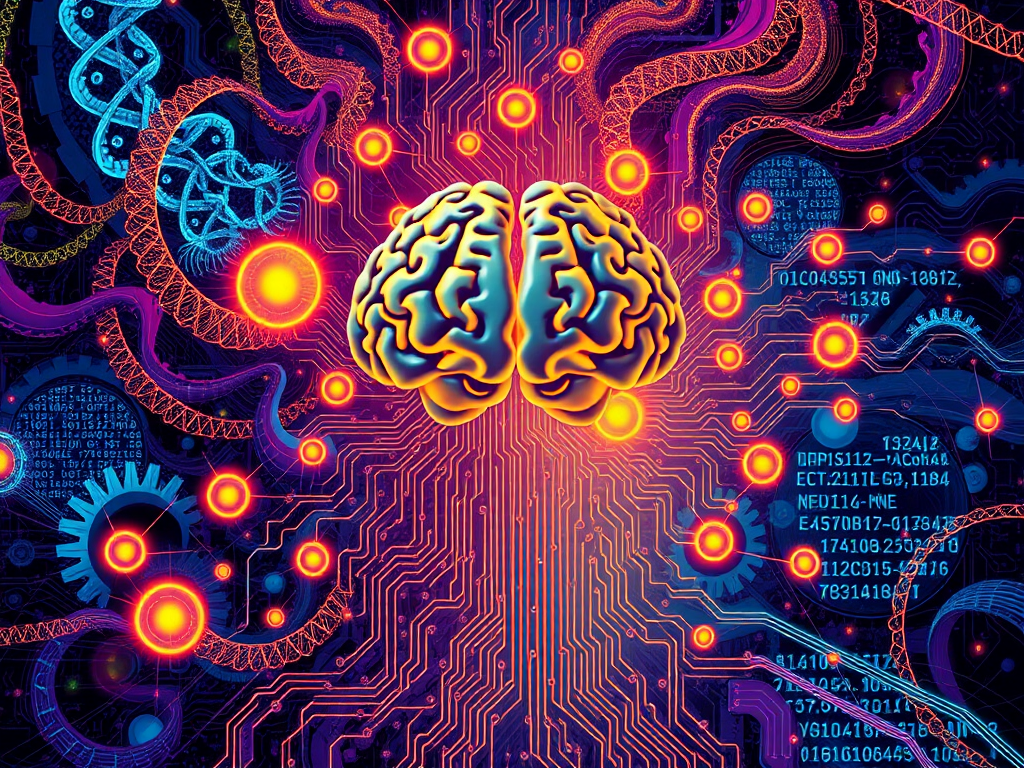Beginner's Village
Hello everyone, I'm a Python programming blogger. Today, let's embark on a machine learning journey together!
Machine learning is one of the hottest technology fields in recent years, allowing computers to automatically discover hidden patterns and knowledge from large amounts of data. Have you ever wanted an intelligent assistant that can learn autonomously? Or a system that can recognize faces and speech? Machine learning can help you realize these dreams!
However, before we start learning, we need to lay a solid foundation. What do you think are the basic knowledge areas we need to master to excel in machine learning?
Preparing Provisions
Yes, that's right, mastering solid mathematics and programming foundations is a prerequisite for learning machine learning. Let's start with the most basic parts!
Mathematical Statistics
The underlying principles of machine learning algorithms are all built on the theoretical foundations of probability and statistics. So we need to grasp some basic concepts, such as probability distributions, mathematical statistics, linear algebra, etc. Don't be afraid, Andrew Ng's Coursera Machine Learning course is an excellent mathematical introduction tutorial!
Python Programming
As the main language for machine learning, Python is definitely the first choice. It's simple to learn, has a rich ecosystem, and offers all kinds of powerful libraries and tools. If you're new to programming, don't worry, start with Python basic syntax and gradually progress.
You're right, once we've mastered mathematical statistics and Python programming, we've prepared the provisions for starting our journey! Next, let's get to know the "tools" in machine learning.
Tool Introduction
Scikit-learn
Scikit-learn is definitely the "big brother" in the Python machine learning world. It integrates common classification, regression, and clustering algorithms, and is simple to use, efficient, and easy to get started with. It's like the headquarters of tools, with everything you need!
I suggest you first visit its official website, see what interesting algorithms you can learn. By the way, you can also check out the content related to neural networks, which is one of the most popular machine learning technologies now!
NumPy and Pandas
Learning machine learning is inseparable from data processing. NumPy can efficiently store and manipulate multidimensional array data, while Pandas is the "Swiss Army knife" of data processing. Once you master these two tools, you can feed "clean" data to machine learning algorithms.
Matplotlib
Visualization is important for understanding both data and models. The Matplotlib tool is specifically responsible for "drawing," and it can generate various high-quality 2D and 3D data visualization graphs. It will definitely be a great helper when we analyze data in the future!
Alright, after introducing these tools, do you have a more intuitive feel for machine learning? Next, let's get hands-on and start with some common algorithms and models!
Algorithmic Techniques
Neural Networks
Remember the neural networks I mentioned earlier? That's right, it's one of the hottest algorithms right now. Neural networks can mimic the way the human brain works to learn, performing excellently in fields like image and speech.
We can start with multilayer perceptrons (MLPs) and gradually understand how neural networks work. Once you've got the basics, you can continue to learn more advanced models like convolutional neural networks (CNNs), recurrent neural networks (RNNs), and so on.
LSTM Autoencoder
You've raised a good question! For sequence data, we usually use LSTM (Long Short-Term Memory), a special type of recurrent neural network, for modeling.
An LSTM autoencoder is a model that combines LSTM with the autoencoder (encoder-decoder) structure. It can efficiently encode and decode sequence data and has wide applications in anomaly detection, data compression, and other fields.
Personally, I think the LSTM autoencoder is a very interesting model. If you're interested in it, why not try implementing a simple version yourself after mastering the basics of LSTM and autoencoders!
Besides the above algorithms, there are many other classic and cutting-edge models in machine learning waiting for you to explore. However, before that, we need to learn an important step - data preprocessing.
Data Rationality
Image Segmentation
Hmm, I see you've raised an interesting X-ray image segmentation problem. Image segmentation is important for medical image analysis, autonomous driving, and other fields.
Your idea of using the scikit-image library to segment the lungs is correct. However, due to the interference of the skeletal parts, the segmentation effect is not ideal. I suggest you try some image filtering, blurring, and other preprocessing methods, which hopefully can improve the segmentation quality.
Overall, data preprocessing is crucial for any machine learning project. We need to perform cleaning, standardization, dimensionality reduction, and other operations on the raw data to ensure that the data input to the model is "clean" and representative. This not only improves model accuracy but also accelerates training convergence.
Feature Engineering
In addition to processing raw data, we often need to perform feature engineering to extract or construct new, more meaningful features from existing ones. This is also very helpful in improving model performance.
Common feature engineering techniques include feature selection based on statistical measures, principal component analysis (PCA), kernel tricks, etc. If you're interested in this, you might want to delve deeper.
Practical Time
Alright, now we've understood the basic theories and tools of machine learning. It's time to see what practical application scenarios machine learning has!
Natural Language Processing
The first application is Natural Language Processing (NLP). We can use machine learning to perform tasks such as text classification, sentiment analysis, named entity recognition on text data.
For example, given a piece of news, we can train a text classification model to determine whether its main topic is politics, economics, or sports. This has applications in automatic news classification, spam filtering, and other scenarios.
Another example is sentiment analysis, through which we can automatically identify the emotional tendencies in users' online comments and respond promptly. This is helpful for businesses to understand user feedback and maintain brand image.
Computer Vision
Besides text, image and video data are also important application areas for machine learning. Taking the medical image analysis you mentioned earlier as an example, we can train models to automatically segment and detect lesions, providing assistance for doctors' diagnoses.
In the industrial field, machine vision can also be used for defect detection, object recognition and classification, etc. For instance, detecting whether products have scratches, identifying cargo categories, etc. These tasks are costly for manual labor, so using machine learning models can be considered.
In short, whether it's unstructured data like text, images, or videos, as long as there's enough labeled data, we can train corresponding machine learning models to show their skills in reality. Are you interested in all these applications?
Cultivating Inner Strength
In addition to the above application scenarios, we also need to learn some "inner strength techniques" to continuously optimize and strengthen our machine learning models.
Model Tuning
After training an initial machine learning model, we need to tune it to achieve the best performance. This is where techniques like hyperparameter optimization and cross-validation come in handy.
For example, for a deep learning model, we need to choose the optimal learning rate, regularization parameters, etc., to avoid overfitting or underfitting. Cross-validation can help us evaluate the model's generalization ability on new data.
Ensemble Learning
The performance of a single model naturally has its limits. So we can try to ensemble multiple models together, leveraging the power of "collective wisdom".
Common ensemble methods include Bagging, Boosting, Stacking, etc. Taking Random Forest as an example, it's based on the Bagging idea, combining the results of multiple decision trees. After ensembling, the overall performance is usually significantly better than a single model.
Besides these, transfer learning and adversarial training are also very interesting techniques that you can explore on your own if interested. With proper practice, your skills will naturally improve!
Rest and Recharge
Wow, it looks like you've gained a comprehensive understanding of machine learning! We started from the most basic statistics and Python introduction, gradually learned about the main tools and algorithmic models of machine learning, as well as its applications in fields like natural language processing and computer vision.
Finally, we introduced some "inner strength cultivation" techniques to help our models reach their full potential. It can be said that you now have an initial understanding and practice of machine learning.
However, to truly go further, we need to continue learning and practicing constantly. Machine learning is a vast field, and we are all eternal students.
Let's continue to work hard on this path, using the power of machine learning to explore broader knowledge domains! Looking forward to sharing more learning insights with you in the next blog post.







